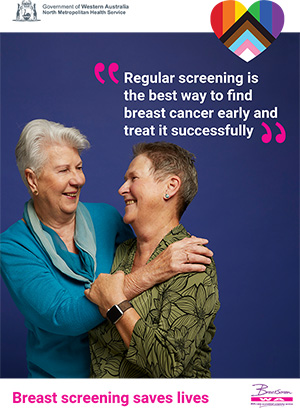 In October last year the Melbourne Declaration was launched. A clear strategy on what Australia needs to do to tackle growing rates of HIV. Introducing rapid testing is a key requirement of the strategy, but its rollout is still likely to take considerable time. Meanwhile in the United Kingdom a different approach has been taken with approval recently given for home testing.
In October last year the Melbourne Declaration was launched. A clear strategy on what Australia needs to do to tackle growing rates of HIV. Introducing rapid testing is a key requirement of the strategy, but its rollout is still likely to take considerable time. Meanwhile in the United Kingdom a different approach has been taken with approval recently given for home testing.
After years of relatively stable rates of HIV transmission, in 2011 the numbers in Australia began to rise with an 8.2 increase in new HIV diagnoses. The Melbourne Declaration called for urgent action and announced an aim to decrease HIV transmissions by 50 within three years.
Highlighting four action areas the strategy called first for a substantial increase in access to, and uptake of, voluntary testing.
One of the major hurdles identified in this area is that Australia had not introduced rapid testing. While other countries were making determinations about an individual’s HIV status via a simple pin prick blood test, Australia was still relying on a lab based test that would take up to a fortnight for clients to discover their results.
The need for improved testing is backed up by the Australian Federation of AIDS Organisations, whose research has found that a disproportionate amount of infections come from those who don’t know they are HIV positive. Additionally a high level of HIV infections come from people who have themselves recently contracted the virus. Encouraging more people to be tested more often would be a key factor ensuring the numbers go down.
The current recommendation is that sexually active men who have sex with men should be testing once a year, and those who engage with more partners or riskier sexual behaviour should test as often as every three months. The number of people testing annually though has been dropping in recent years.
The AFAO notes two sets of barriers to people getting tested, some are structural such as cost, location and confidentiality and the need to return to get the results, the other barriers are psychological including a fear of the results, a reluctance to discuss risky behaviour with doctors and HIV being stigmitised within the community.
Andrew Burry, Chief Executive of the WA AIDS Council says that the waiting period is not one of the prominent reasons people give for not getting tested, but issues around access and cost can be a big factor.
“The reason is usually fear of the results or because for them it’s not free, or they can’t find anywhere to get tested or they don’t feel comfortable going to their GP, so those are the main reasons, and M clinic has addressed all of those because it is free, which is convenient, it is open outside of business hours and it’s peer run.”
For Burry one of the greatest advantages of rapid testing is it will allow facilities like the M clinic to increase their capacity. If people don’t need to return for their results, virtually half the number of appointments will be needed.
The arrival of rapid testing has many stages to go through before it is available though. The Therapeutic Goods Administration approved the test for use in Australia in January, but for it to receive a widespread uptake the test must also be added to the Pharmaceutical Benefits Scheme, and the Medicare system. Back in January, when appearing on the radio program ‘All Things Queer’ Andrew Burry said this could still be up to eighteen months away.
In Queensland the state government has taken a different approach, providing the additional funds required for rapid testing to begin, while in Victoria a test scheme operating under the name of ‘Pronto’ is currently underway.
On August 13th Federal Health Minister Tanya Plibersek announced 13 million dollars of funding in the area of blood bourne viruses. 1.3million of this is earmarked by the AFAO for the roll out of rapid testing.
AFAO President Willie Rowe welcomed the funding commitment,
“All of the evidence shows that expanded access to testing is one of the most powerful tools at our disposal,” said Rowe
“Expanding the uptake of voluntary testing is critical if we are going to drive down the rate of HIV infections in the gay community.”
A spokesman for shadow opposition Health Minister Peter Dutton* confirmed that the coalition also supported the roll out of rapid testing.
“The Coalition is strongly committed to reducing the prevalence of HIV/AIDS and ensuring timely access to new treatments. We continue to provide bi-partisan support for initiatives targeted to improving our response, including the current implementation of rapid testing across various jurisdictions.”
Meanwhile in the United Kingdom the government has announced that home testing kits will be made available on the National Health Scheme later this year. For Deborah Jack, Chief Executive of the National AIDS trust, the introduction of home testing kits would improve quality and safety for consumers,
“We know people are already buying poor quality self-testing kits online…” said Jack announcing the poly change, “Legislation is an important step to ensure they are regulated, accurate and safe.”
Lisa Power, policy director at Britain’s Terrence Higgins Trust also highlighted that the undiagnosed cases of HIV were responsible for a significant amount of new transmissions.
“Currently, most HIV transmission in the UK is driven by the 25,000 people who have HIV but have not yet been diagnosed. Anything that encourages these people to test, take control of their health and get treatment is a welcome advance.”
For Australia the focus in on the national roll out of rapid testing, confirmed Linda Forbes, acting Executive Director of the AFAO.
“The National HIV Testing Policy categorically does not support home testing, so approval of a rapid test for home use in Australia will require further revision of the National HIV Testing Policy,” said Forbes.
For Andrew Burry, at the WA AIDS Council the suggestion of home testing has both positive and negative elements.
“What worries me is that if you buy a site unseen product and you don’t know what standard its meeting and you don’t know how to interpret the results and you don’t know what to do if you think you’ve got a positive result,” said Burry.
Burry highlights that professional services have significant support services for someone who is newly diagnosed and research had shown that the M clinic’s setting provided a great deal of support to clients. Burry could however see a future role for home testing in remote and regional areas of the state.
“The absence of rapid testing it not a particular barrier in the Perth metro area, but what about the people who live a two hours drive away who don’t test at all because they don’t really have the opportunity to come to a testing site, or live in a small community where they don’t really want to discuss anything with the local doctor. I don’t like to call it home testing, I like to call it ‘self ministered testing’, and there’s a place for self ministered testing if it’s supported effectively.”
Whether it’s traditional testing, a soon to be available rapid test or possibly a self administered test in the future, the underlying change that needs to occur is more people getting testing more often, and organsiations being given sufficient support to create the capacity to allow this to happen.
Graeme Watson, image istock
*This article was first published in the print edition of OUTinPerth prior to the Federal election.





